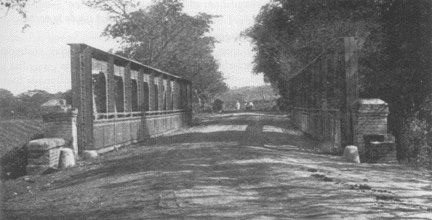
Hacienda Carmen/Ratina/Isabel Josefa - Cabo Rojo
In 1839 Spanish immigrant from Vigo, Galicia, Francisco de Silva y Cortinas bought land and an oxen driven mill from the family of his wife Micaela del Carmen Ponce de Leon y del Toro Quiñones and named it Hacienda Carmen in her honor. The land acquired by Francisco extended north all the way to where today PR-114 meets PR-100 and was much larger than the three hundred thirty nine acres that Hacienda Carmen later occupied between the Guanajibo River and the Viejo River.
The 1870 tax declaration record shown below dated May 24, 1870, was the last filed by Francisco. In the 1872 Puerto Rico Slave Register, Francisco Silva Cortinas appears as a slave owner of approximately thirty slaves. Francisco died ca. 1872 shortly after he sold Hacienda Carmen to Rafael Bello Motta and his wife Monserrate “Ratina” Ithier (1827-1900). Rafael and Moserrate installed a steam driven mill and changed the name to Hacienda La Ratina.
Upon Rafael's death which preceded his wife's, ownership of the hacienda passed on to his estate who then sold it to Spanish immigrant from Salamanca, Guillermo Santos de la Mano (1851-1929) who on September 21,1885 married Josefa Tió Segarra (1847-1908) the daughter of Bonocio Tió Urgell and Maria Agustina Segarra del Toro. As a separate note not related to this hacienda, Josefa Tió Segarra was the sister of well known poet Bonocio Tió Segarra who in turn was married to famous poet and political activist Lola Rodriguez de Tió.
It was later owned by Josefa's 1st cousin Salvador Tió Malaret (1875- ) who sold it to Adolfo Ramirez de Arellano Conty (1831-1900). After Ramirez de Arellano's death, it was owned by the firm Adolfo Ramirez de Arellano & Sobrinos represented by Quintin Ramirez de Arellano Ramirez de Arellano (1870-1935) and Alfredo Ramirez de Arellano Rosell (1882-1961) who changed the name to Isabel Josefa in honor of his wife Isabel Josefa Bartoli. In Google Maps, the general area where the sugar factory was located along PR-103 is identified both as La Ratina and as Isabel Josefa.
On or around 1902, the hacienda then known as Hacienda Isabel Josefa dissapeared as an independent entity when it merged into Hacienda Josefa and Hacienda Estabanía owned by the estates of Spanish immigrants from Mallorca Esteban Nadal Grós (1807-1892) and Ramón Nadal Grós(1809-1865).
As can be seen in the map below, Hacienda Carmen was located near what today is PR-103 between the Guanajibo and Viejo Rivers adjacent to the North of what used to be Hacienda Ratina. There aren’t any known existing structures of the mill today. What still remains on the original land is the Silva Bridge, which played an important role in the Spanish-American War. The pictures of the bridge and other documents included in the gallery below are the courtesy of Dr. Nydia "Cookie” Rodriguez Hanna, a descendant of Francisco de Silva y Cortiñas.


